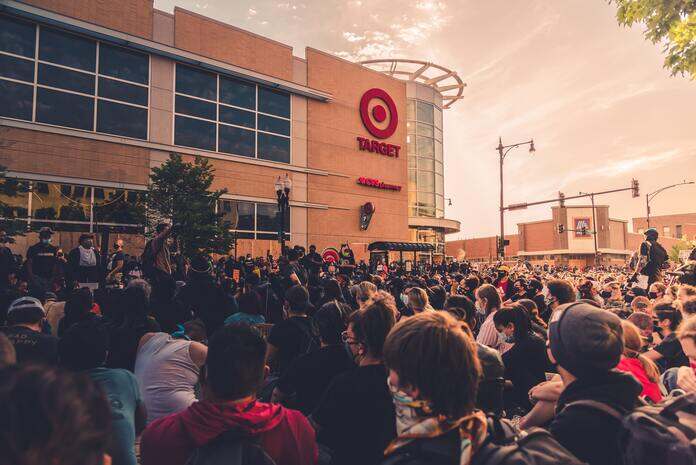On Wednesday, Target (NYSE:TGT) announced a decrease in quarterly revenue due to high prices on essential items affecting shopper spending. The Minneapolis-based retailer’s profit results fell short of analyst expectations, and the company issued a cautious profit outlook. This marks Target’s fourth consecutive quarter of declining comparable sales, which include sales from stores or digital channels open for at least 12 months. However, Target expects to return to quarterly sales growth this quarter.
Shares dropped nearly 10% in premarket trading on Wednesday.
In an effort to boost sales, Target announced plans to reduce prices on thousands of consumer basics, including diapers and milk, over the next several months to attract deal-seeking customers. The retailer is also focusing on making shopping more convenient and enjoyable to compete better with Walmart and Amazon.
In April, Target launched a new paid membership program called Target Circle 360, offering unlimited free same-day delivery for orders over $35 and free two-day shipping for all orders. The $99 annual membership has been well-received, according to the company.
Target is also updating existing stores, planning to build over 300 new locations in the next decade, and expanding store-owned brand offerings to appeal to cost-conscious shoppers.
Despite the efforts, Target did not perform as well as Amazon and Walmart in the recent quarter. Amazon, the largest online retailer in the U.S., reported better-than-expected results for the holiday shopping period last month. Walmart also posted strong sales results, attracting shoppers with its low prices.
Walmart is drawing households with incomes exceeding $100,000 a year by focusing on convenient and faster shopping options. Two-thirds of Walmart’s market share gains come from this income group, the company said.
Top home improvement retailers Home Depot and Lowe’s, which benefited from pandemic-related home projects, reported another quarter of sales declines due to high mortgage rates and inflation affecting homeowners and prospective buyers.
Target CEO Brian Cornell noted that shopping patterns are normalizing, with customers spending more on services and out-of-home entertainment, which reduces spending on discretionary items. One of the biggest challenges is the high inflation on groceries and household essentials, still up 20% to 30% compared to pre-pandemic prices, putting a strain on consumer wallets. However, Cornell mentioned that a healthy job market and consumer confidence in finding new jobs have helped sustain spending.
“We haven’t seen a significant change in consumer behavior for the last few quarters, and we still see a very resilient consumer and expect that to continue over the balance of the year,” Cornell said.
Target reported a net income of $942 million, or $2.03 per share, missing analysts’ projections by 3 cents, according to FactSet. Profit for the period ended May 4 was also below last year’s $950 million, or $2.05 per share. Revenue slipped 3.1% to $24.53 billion, slightly above Wall Street’s expectation of $24.52 billion.
Comparable sales declined 3.7% in the latest quarter, an improvement from the 4.4% drop in the previous quarter. Sales declines were mainly in discretionary categories, partially offset by continued growth in beauty products. Target noted that while clothing sales were still down, they showed improvement.
For the second quarter, Target expects comparable sales to be flat or increase by up to 2%, with earnings between $1.95 to $2.35 per share. Analysts expect $2.20 per share. For the full year, Target anticipates comparable sales to increase by no more than 2%, with earnings per share ranging from $8.60 to $9.60. Analysts expect $9.49, according to FactSet.
Featured Image: Unsplash















